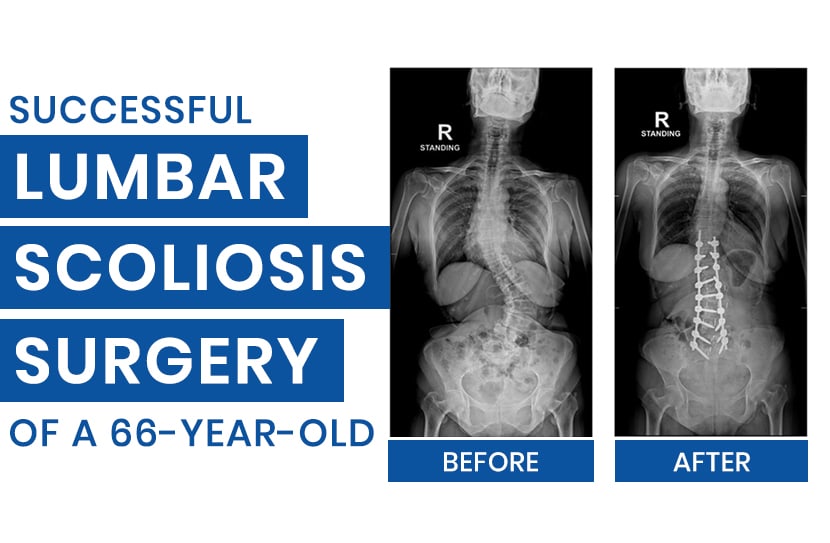A patient has been in pain for the last 20 years. After surgery, she felt like that pain was a nightmare. A tale of a patient who was suffering from lumbar scoliosis for years.
A 66-year-old lady from Bangalore visited the Centre for Spine & Scoliosis with complaints of severe low back pain which was radiating into her legs. The pain was associated with numbness in the left leg. The patient has been progressively losing height also.
On detailed assessment, she was diagnosed with a case of degenerative lumbar scoliosis which was gradually progressing. Degenerative lumbar scoliosis causes back pain and radicular leg pain due to stretching of nerves or compression over nerves and causes severe pain at the site where the rib cage starts touching the pelvis.
Detailed discussion was done with patient and family and all non-operative treatments were discussed. The patient came back to spine surgery specialist for surgery after failing 4 months of conservative treatment.
Considering her age, she was planning for advanced minimally invasive surgery for degenerative scoliosis. Surgery was done in 2 stages at an interval of 1 week.
In Stage 1: The expert approached the spine from the side of the abdomen and changed 3 discs L1-L2, L2-L3, and L3-L4 with OLIF cages. OLIF (Oblique Lumbar Interbody Fusion) allows the expert to put large lordotic cages through the side of the abdomen in a minimally invasive manner, leading to a very fast recovery and 3-dimensional correction of scoliosis.
In Stage 2: Posterior Spinal Fusion was done from D10 to Sacrum. L4-L5 and L5-S1 discs were removed and replaced with TLIF cages. She is now happy, pain-free enjoying her life.
Advanced minimally invasive techniques have allowed experts in the center of spines to achieve good results in this highly complex disorder of degenerative scoliosis. However, surgery should be done only where the patient’s disability is severe and all non-operative treatment options are exhausted.

Comment
Be First To Comment